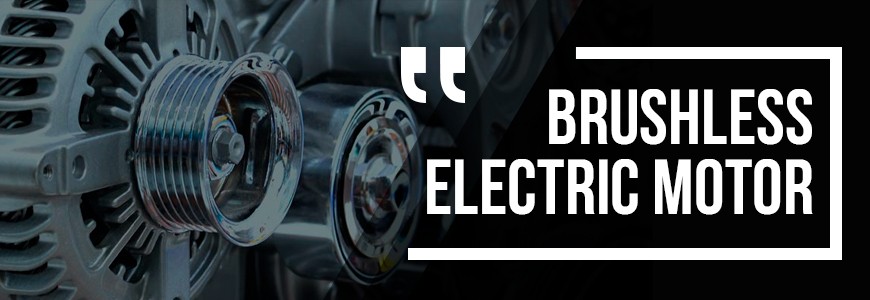
A DC motor is an electrical device that converts electric power of direct current into mechanical power. Almost all electrical DC motors are supplied with electromechanical or electrical internal mechanism for periodic change of current direction.
DC motors were the first ones to be widely used all over the world. Motor speed can be controlled within a big range with the help of alternating voltage or by changing current load on winding coils.
A brushed DC motor
A brushed motor develops torque directly from electric current delivered to it, by using internal commutator, stationary magnets (permanent or electromagnetic) and rotating magnets.
Brushed DC motors advantages: low production cost, high reliability, easy speed control.
Brushed DC motors disadvantages: high operational costs, short service life as a result of heavy use.
Brushed DC motors maintenance includes regular change of carbon brushes as well as commutator clean or replacement. Those components are important as they deliver electric current to the rotor winding.
A brushless DC motor
In a typical brushless DC motor the rotor has the form of permanent magnets rotating around the stator with solenoid magnets. Controller of such a motor converts direct current into commuted current. This motor type is mechanically simpler than the brushed DC motor as there is no need to transmit the electric current to the rotor, which is quite complicated.
Controller of the motor can follow rotor position with the help of Hall-effect sensors as well as control timing, phases and other parameters very precisely. The current on the motor windings helps to optimize the torque, reduce energy consumption, control speed and even to brake.
The advantages of the brushless DC motors: long service life, no maintenance required, high performance.
The disadvantages of brushless DC motors: high production costs, more complicated speed controller.
A brushed motor vs a brushless motor. Comparison.
Brushed motors were invented in 19th century and soon became widely used. It became possible to manufacture brushless DC motors only after the invention of semiconductors in 1960.
About commutator
In brushed motors a commutator has the form of a rotary switch on the motor shaft. It consists of a rotary cylinder divided into a number of segments (contact bars) fixed around the rotor. These segments are connected with the solenoid windings of the rotor. Two or more (two is a standard number) stationary contact bars called “the brushes”, made of a soft conducting material (comparatively to the one of the commutator), make a slide contact with the segments of the commutator. Half-turning, the commutator each time changes the direction of electric current on the rotor windings and thus the magnetic field produces a torque only in one direction.
The main disadvantages of a commutator:
- Slide contact between the brushes and the commutator causes the loss of energy which can be considered as a significant disadvantage.
- Friction between the brushes wears them out and causes machine pollution with dust, so with time the brushes are to be replaced.
- Resistance of slip contacts leads to voltage drop.
- Sharp redirection of current flows caused by windings induction leads to dangerous contact sparking and electrical noise, which in its turn may results in electromagnetic interference with the closest electric circuits.
Brushless DC motors have been invented to remove these defects.
Brushless option
A study of semiconductors in electronics gave an opportunity to take the commutator and the brushes away from the DC motors. Electric servo system in brushless DC motors replaces a mechanical switching unit. Electric sensors fix the angle of the rotor and control semiconductor switches such as transistors, which switch the current on through the windings and redirect (in some motor switch off) current flows at a fixed time each 180 degrees. In this way the solenoid magnets produce a torque in one direction. With the removal of slide contacts from the DC motors it became possible to avoid units wearing and to prolong the service life. The period of service of such DC motors is limited only by the lifetime of their bearings.
That is why modern power steering systems use brushless DC motors in their constructions.



COMMENTS